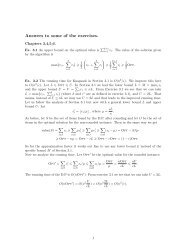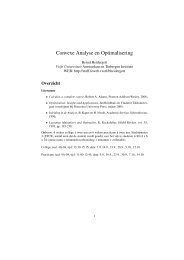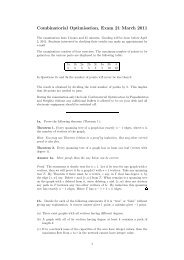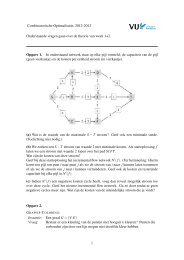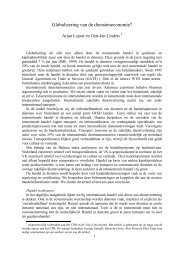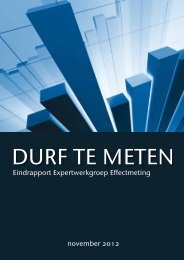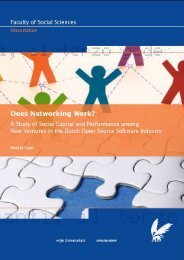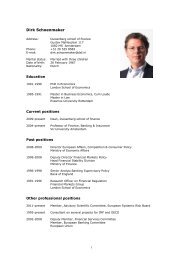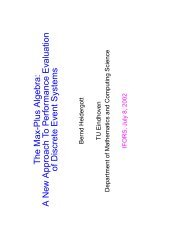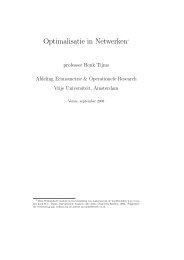Introduction to Local Level Model and Kalman Filter
Introduction to Local Level Model and Kalman Filter
Introduction to Local Level Model and Kalman Filter
You also want an ePaper? Increase the reach of your titles
YUMPU automatically turns print PDFs into web optimized ePapers that Google loves.
Three exercises<br />
1. Consider LL model (see slides, see DK chapter 2).<br />
◮ Reduced form is ARIMA(0,1,1) process. Derive the<br />
relationship between signal-<strong>to</strong>-noise ratio q of LL model <strong>and</strong><br />
the θ coefficient of the ARIMA model;<br />
◮ Derive the reduced form in the case ηt = √ qεt <strong>and</strong> notice the<br />
difference in the general case.<br />
◮ Give the elements of the mean vec<strong>to</strong>r <strong>and</strong> variance matrix of<br />
y = (y1, . . . , yn) ′ when yt is generated by a LL model.<br />
◮ Show that the forecasts of the <strong>Kalman</strong> filter (in a steady state)<br />
are the same as those generated by the exponentially weighted<br />
moving average (EWMA) method of forecasting:<br />
ˆyt+1 = ˆyt + λ(yt − ˆyt) for t = 1, . . . , n. Derive the relationship<br />
between λ <strong>and</strong> the signal-<strong>to</strong>-noise ratio q ?



